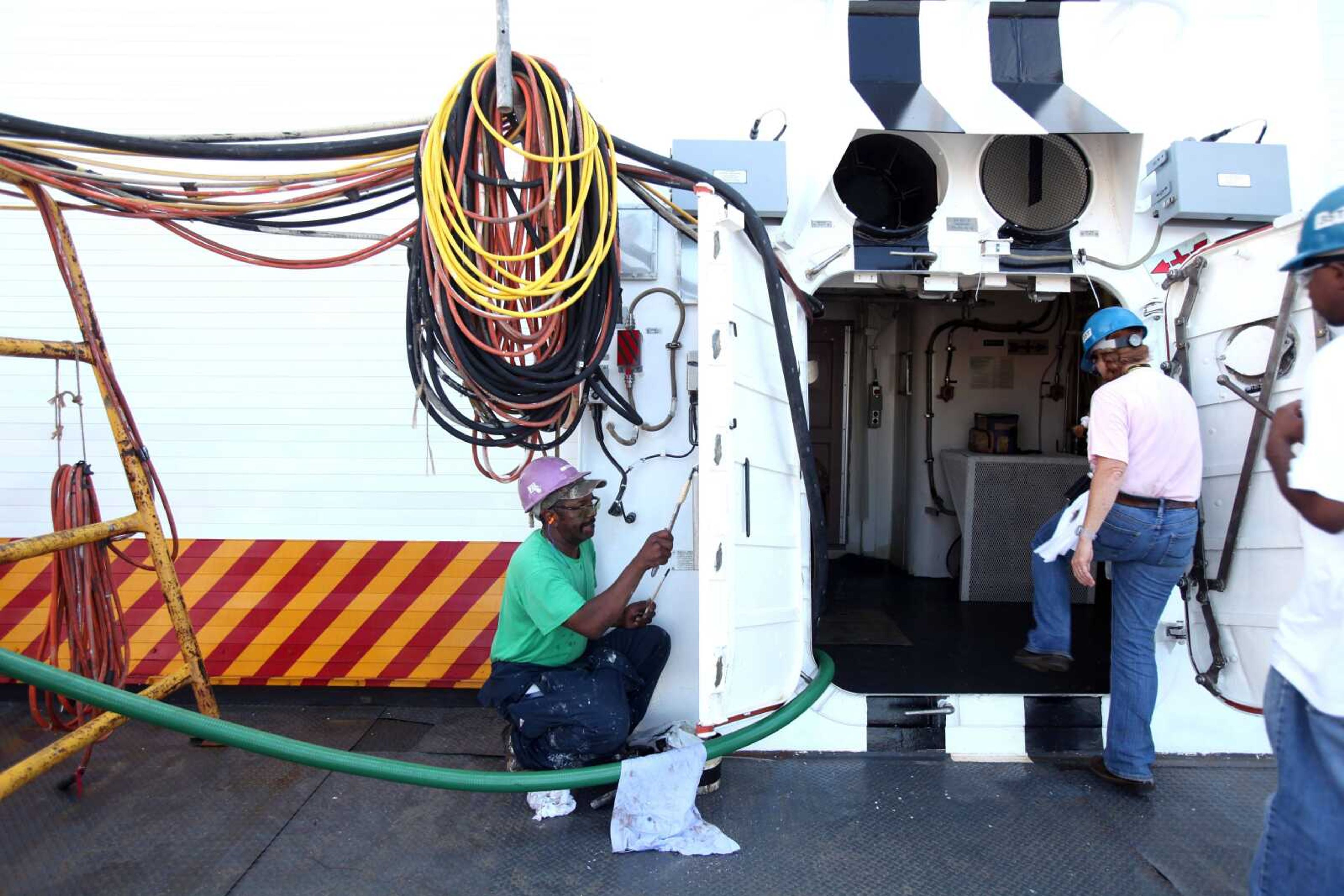U.S. Coast Guard struggling to update its aging fleet
PASCAGOULA, Miss. -- Nearly a decade into a 25-year, $24.2 billion overhaul intended to add or upgrade more than 250 vessels to its aging fleet, the Coast Guard has two new ships to show after spending $7 billion-plus. Now it's facing an uphill battle persuading a budget-conscious Congress to keep pouring money into a project plagued by management problems and cost overruns...
PASCAGOULA, Miss. -- Nearly a decade into a 25-year, $24.2 billion overhaul intended to add or upgrade more than 250 vessels to its aging fleet, the Coast Guard has two new ships to show after spending $7 billion-plus.
Now it's facing an uphill battle persuading a budget-conscious Congress to keep pouring money into a project plagued by management problems and cost overruns.
"Congress wants to work with the Coast Guard to meet their needs for its myriad missions but will not simply supply a blank check," said GOP Rep. Frank LoBiondo of New Jersey, chairman of the House Transportation and Infrastructure subcommittee that oversees the Coast Guard.
By now the Coast Guard was supposed to have at least eight new ships -- four 418-foot national security cutters and four 154-foot cutters -- either in the water or about to be delivered. Instead it has only two of the largest ships already in use, with two ships more on the way.
LoBiondo and others in Congress, including Rep. Bennie Thompson, the top Democrat on the House Homeland Security Committee, repeatedly have questioned the progress and scope of the fleet overhaul.
A matter of money
Government auditors have concluded that the Coast Guard still doesn't know the answers to those questions.
The two completed ships and two more under production have cost about $2 billion. Much of the remaining $5 billion has been spent on new contracts for at least 10 more ships and improvements to more than two dozen older ships.
The Coast Guard also used some of the money to buy and upgrade aircraft, though vessels were the program's primary focus.
The modernization effort that began in earnest in 2002 was designed to replace ships from World War II, Korea and Vietnam.
But within the first year, as Congress started to dole out billions of dollars for newfound homeland security concerns after the Sept. 11 attacks, Coast Guard officials realized their blueprint wasn't exactly what was needed.
"I'll be the first to admit, we weren't prepared to start spending this money and supervising a project this big," said Coast Guard Commandant Adm. Robert Papp.
Budget-cutting in the 1990s had left the service with few experts on buying new ships and other equipment. So the Coast Guard turned the project over to a joint venture between Northrup Grumman and Lockheed Martin. Huntington Ingalls Industries, a Northrup Grumman spin-off that's continuing to build Coast Guard ships, referred all questions about the program to the Coast Guard.
Keith Little, a Lockheed spokesman, said the company is fulfilling existing contracts and has completed upgrades for several aircraft, along with building several others.
The program, known as Deepwater, appeared in trouble almost from the beginning. Early government audits criticized Coast Guard officials for a lack of oversight, which invariably led to early delays and cost increases.
"In essence the contractors were overseeing themselves," said Thompson, D-Miss.
Hurricanes, including Katrina in 2005, led to delays at the Pascagoula, Miss., shipyard where many new ships are being built.
In the early 2000s, the Coast Guard awarded a contract to Bollinger Shipyards Inc. to convert its 110-foot patrol boats to 123-foot vessels. Starting with eight ships, the contractor attached new steel to extend the hulls of the ships by 13 feet. The results were disastrous.
Last month the Justice Department sued Bollinger Shipyards, accusing the Lockport, La., company of "making material false statements to the Coast Guard" about the hull strength of the converted ships.
In a written statement, Bollinger said it has "been open and cooperative with the government, and we remain committed to providing the government all necessary information and assistance to bring this matter to a close." The statement added that the company was prepared to "defend our good name aggressively in a court of law."
The upgrades in question cost about $95 million and the eight boats had to be decommissioned.
The Coast Guard took over management of the Deepwater program in 2007. By then the new estimated price had risen from $17 billion to $24.2 billion.
Cmdr. Matthew Lake, who works in the Coast Guard's Office of Budget and Programs, insists the Coast Guard has "learned from those earlier challenges and we've made significant improvements."
The most recent Government Accountability Office report, published in July, concluded that while the Coast Guard has done a better job with oversight, the "$24.2 billion program as envisioned in 2007 is no longer feasible, in terms of cost and schedule."
The Coast Guard must address the weaknesses that auditors identified if the program is to move ahead, Thompson said. "I think to come to Congress with an incomplete program will only push the improvements required that much father back," he said.
LoBiondo said the Coast Guard needs to provide Congress with an accurate estimate and start meeting "long-promised increased operational capabilities."
Papp said the criticism was fair, but wishes auditors and legislators would focus more on what's been accomplished.
Last month's report showed "where we were. I'm not blaming anybody. I'm just trying to explain where we are."
Connect with the Southeast Missourian Newsroom:
For corrections to this story or other insights for the editor, click here. To submit a letter to the editor, click here. To learn about the Southeast Missourian’s AI Policy, click here.









